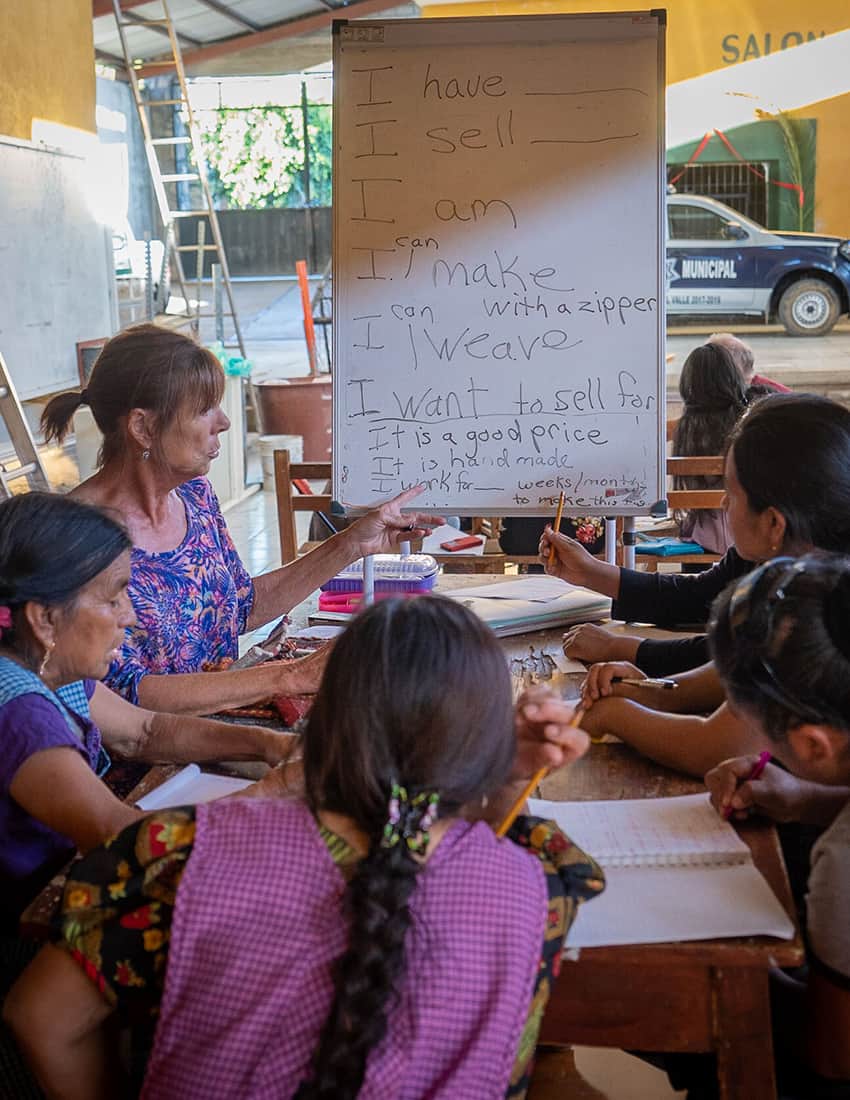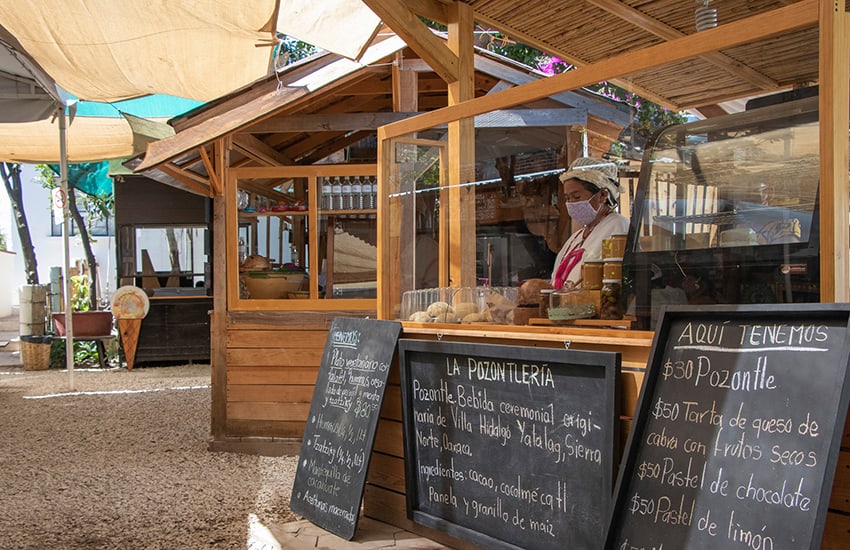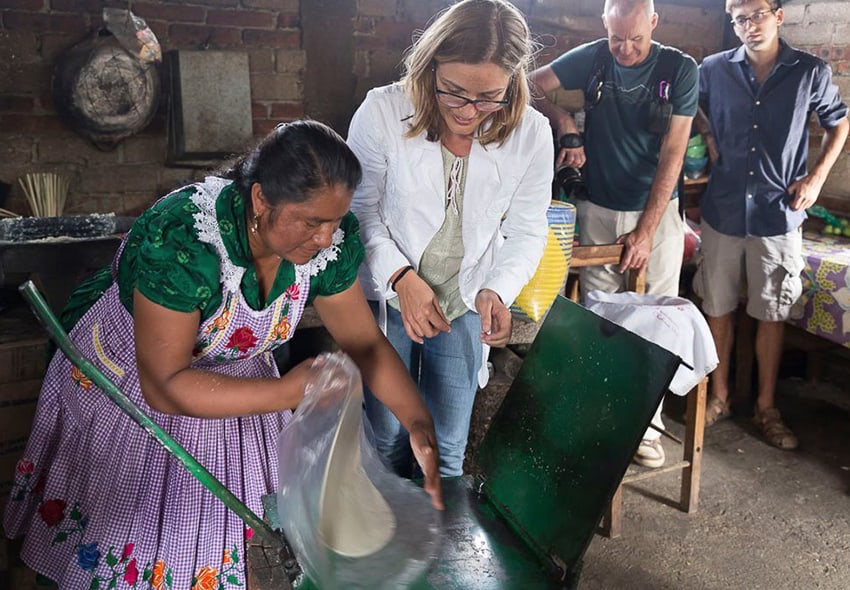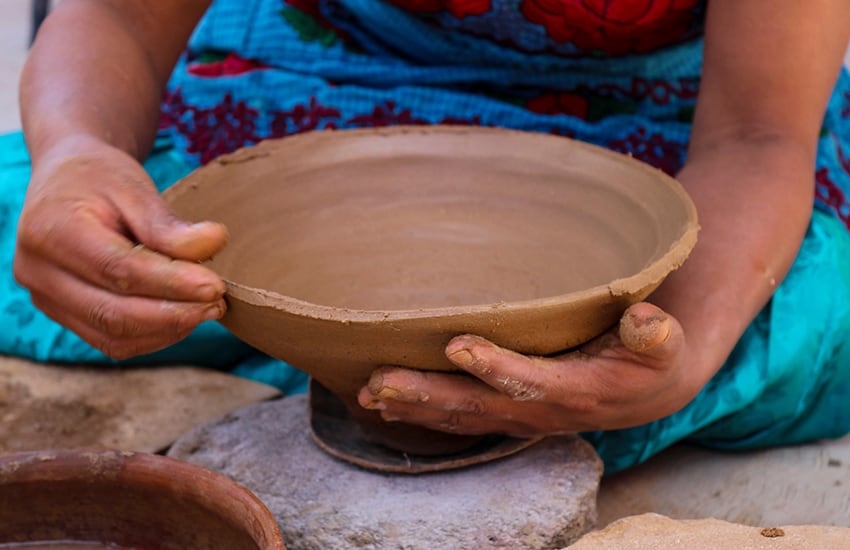One of the first things that impressed me in Mexico was the ability of people to start a business with next to nothing — a table on the street with some food or small merchandise. Granted, I have never had to do this to get by, but I also come from a culture where police now shut down kids’ lemonade stands.
When I talk about this with Mexican friends, they agree that it is a positive, but a number note that the problem often is how do you take it to the next level? In the valley of Tlacolula, Oaxaca, the microfinance non-profit En Vía (On the Way) is providing rural women with the means to do just that.
According to En Vía managing director Viviana Ruiz Boijseauneau, microfinance is a natural extension of Mexicans’ natural entrepreneurial tendency. “There is a lot of initiative in Mexico,” she said. “We provide small incentives, capital and training.”
En Vía’s work is very similar to microfinance organizations around the world, a model that was much hyped a couple of decades ago as the solution to world poverty. Although it never did turn out as promised, it can be very useful.
The trick is to adjust the model to local circumstances.

Like other such organizations, En Vía focuses on giving very small business loans for start-ups to poor rural populations who lack access to banking and credit services. As in many parts of the world, people in rural Oaxaca are isolated from the mainstream economy with no credit histories and often no verifiable incomes. If a credit agency does lend to them, it is at exorbitant rates.
These microfinance organizations do more than just lend; they provide ongoing support. En Vía’s basic education program consists of eight sessions covering topics such as managing finances and setting prices. In addition, they offer more specialized classes such as textile marketing and design, computer skills, branding, diabetes prevention and worm composting.
Like many such operations, En Vía funds exclusively women clients. This is ideological.
“Our mission is to empower women to have a better quality of life — first them (the women), then their families and their communities,” says Ruiz. On En Vía’s website, it states, “It has been proven that women are more likely to put generated income toward the benefit of their family’s well-being.”
The main difference between En Vía and other microfinance organizations is its ability to take advantage of a unique regional economic opportunity: central Oaxaca’s important tourism industry.
Luring tourists outside Oaxaca city proper, En Vía promotes “responsible tourism,” which it defines as something that “… improves the well-being of the local community.” It encourages visitors to “meaningfully connect with local people, to learn about their culture and livelihoods and to allow for genuine exchange.”

This includes tours of their clients’ businesses to let the women show visitors what they are doing. By touring the businesses, outsiders get a more “authentic view” of life in the Central Valleys than can be seen in the city.
It dovetails well with the businesses of most of the women, who are artisans and depend on tourism to have a market for their wares. On a practical level, the tours bring customers, but they also bring in funding to En Vía to cover operating expenses, helping to keep the loans interest-free.
Because of tourism, English language lessons are very popular among younger women so that they can sell to more people.
Not all of the women in the program are artisans; some open restaurants, and one even opened a hardware store.
The pandemic has hit En Vía’s artisans hard, forcing them and En Vía to look at alternatives. This has included learning to sell their products online, but perhaps more interesting has been some clients’ move to raising chickens.
Initially, En Vía began helping women raise chickens as a way to feed their families once income sources dried up. However, a number of their clients have decided that they can go beyond that, working toward commercialization of the birds, including breaking into better-paying organic production.

The tours, a foreign resident population and general interest in Oaxaca’s socioeconomic situation also mean that En Vía works with a significant number of volunteers. Depending on the time of year (in normal, non-pandemic times, that is), it can vary from 25 to about 50.
They get the most volunteers during the “high seasons,” which are December to April for snowbird retirees and May to August when students are on summer break.
Ruiz says that volunteers have a unique opportunity to work meaningfully with clients in a way that has real benefit. They run tours, teach English classes and specialized workshops and do translations. Many of the tour guides and English instructors are foreign residents. En Vía has university student volunteers doing classes in business and other specialized topics.
Microfinance is not a magic bullet. The European Microfinance Platform has warned against problems with Mexican borrowers taking on multiple loans, making their ability to pay questionable. However, Ruíz boasts that En Vía has a 99.8% repayment rate. She criticizes more traditional lenders’ justification for high interest rates.
“Just because they are poor does not mean they will default. We are proof that the opposite is true. The women respond well to the mutual confidence that we encourage.”
Much of that mutual confidence comes from the fact that the women’s work gets such outside attention. It is not simply a matter of lending money to women who work in obscurity. En Vía provides a platform through which women in isolated communities can reach out beyond their world — and the world can reach out to them.

Tours through En Vía have been resumed and are scheduled at least through August 14, 2021, with Covid measures in place, and they are still accepting volunteers.
Leigh Thelmadatter arrived in Mexico 18 years ago and fell in love with the land and the culture in particular its handcrafts and art. She is the author of Mexican Cartonería: Paper, Paste and Fiesta (Schiffer 2019). Her culture column appears regularly on Mexico News Daily.
